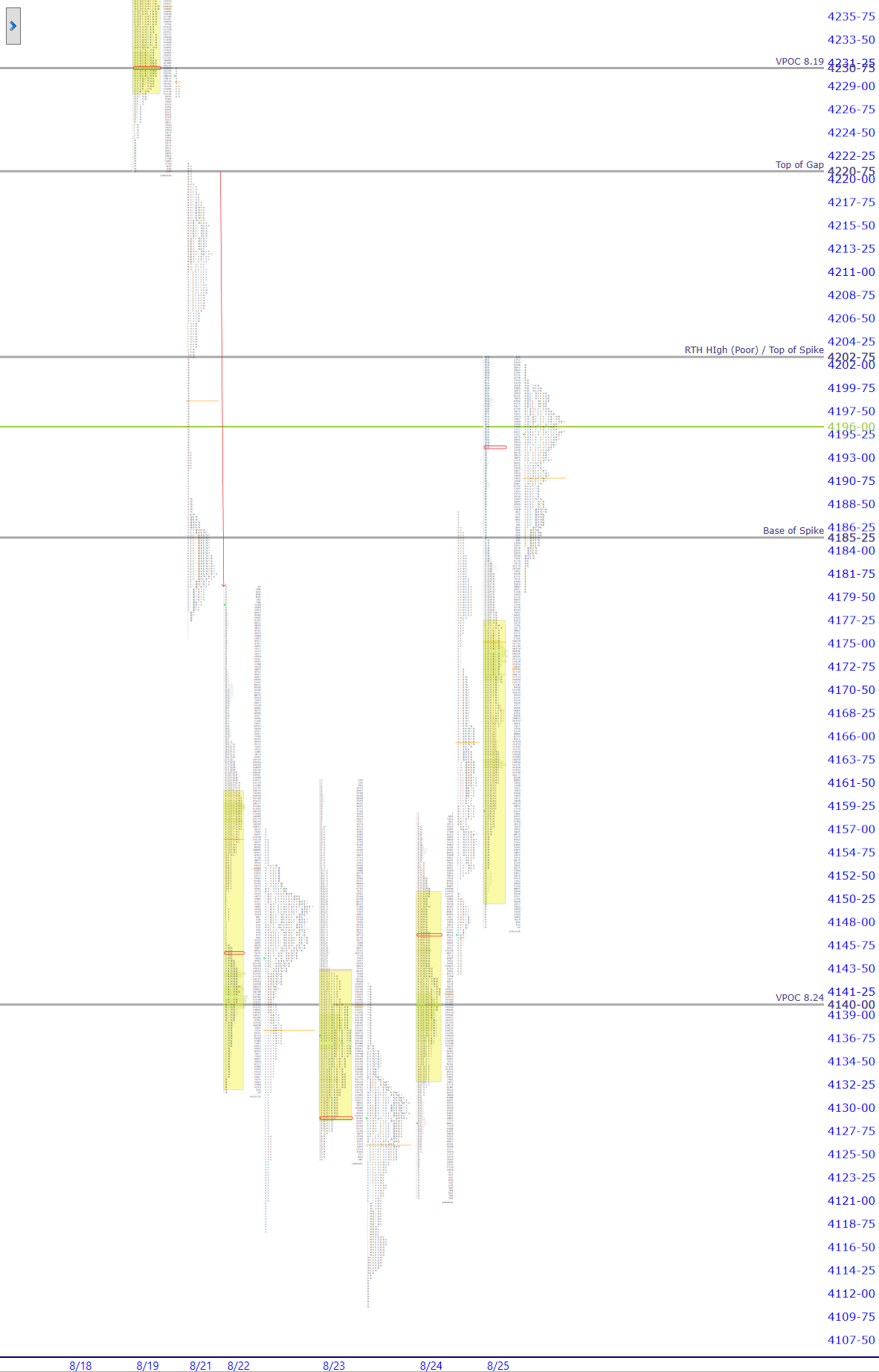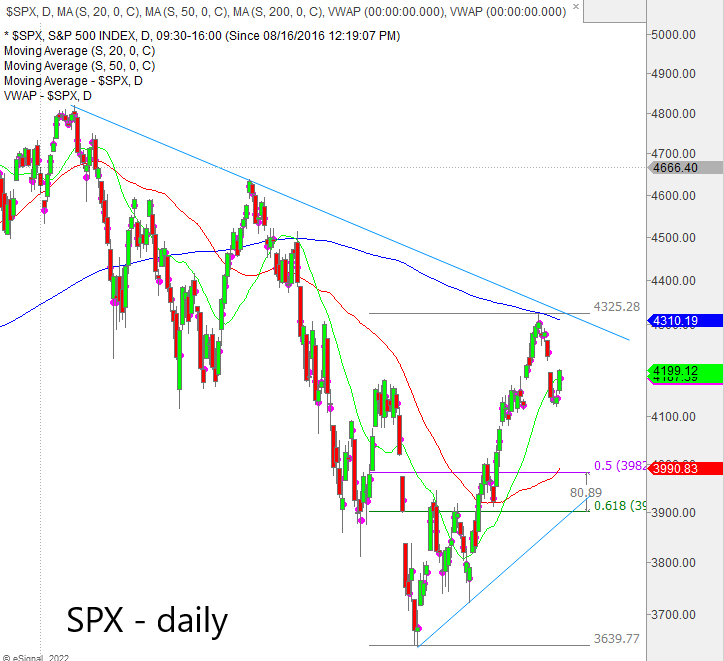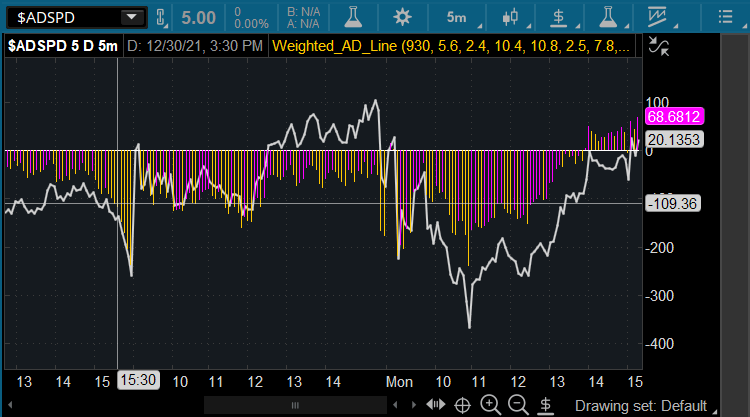The Market ProfileA way of reading the market that recognizes either time spent or volume traded at a particular price level. A market profile can be either made up of “TPO’s” (time price opportunities), or volume. TPO’s measure how much time was spent at a particular price, while volume-based market profiles measure how much volume traded at a particular price. Generally, market profile is used in the trading of futures, especially the /ES. ShadowTrader utilizes volume based profiles. valueThis value has nothing to do with valuation. It denotes prices that are "fair". Fair in this sense means a price that is common to a lot of participants. An item that you buy once per week in a store at a price that doesn't fluctuate has a "fair price". You can express this by a formula Value = Price + Time or Value = Price + Volume Either of the above are valid ways of expressing value. In the first equation, value is defined by price staying the same for a long period of time. In the futures market, this would be an area that is revisted a lot during a particular session or multiple sessions. The point of control is the price level where the most amount of time was spent during an RTH session. James Dalton refers to this level as "the fairest price to do business". Using vo... More areas and ShadowTrader Pivots for /ESU22 and /NQU22 Futures are posted free every morning in the ShadowTrader Swing Trader newsletter.

WindoTrader 702-800-4628 Speak with Terry about the ShadowTrader discount or CLICK HERE to learn more.
Click HERE for a market profile key that will help you interpret the chart above.
Pre market indications
| Opening In/Out Balance | in balance |
|---|---|
| Overnight InventoryA way of measuring overnight activity in the futures market by just noting how much of the overnight activity happens to fall above the prior day's settlement value (4:15pm EST close) and how much falls below. If more activity is above the settlement, then overnight inventory is said to be net long. If more is below, then it is said to be net short. If all of the overnight activity is above the settlement, then it is said to be 100% net long. If all of the activity is below the settlement then it is said to be 100% net short. The overnight inventory situation matters most and has the most impact on early trade when it is skewed 100% in either direction because when the imbalance is very large like that then the odds of an early correction increase greatly. This is due to the fact that most... | balanced |
| Current Price/Overnight Range | middle third |
| Shock and AweA term Peter uses to describe what overnight futures traders may be feeling when faced with an open that is wildly divergent from what they expected. Large gaps in either direction that are opening well outside of range are examples of this. The approach is that when the market opens in such a manner, there is often opportunity to trade earlier rather than later because of the large contingent of traders who will be forced to reverse their positions quickly. | no |
| Potential for Early Trade | no |
| Short Term Bias | neutral, currently at a flat 20sma daily |
Key Levels for Today
| 4220.75 | Top of Gap |
|---|---|
| 4202.75 | RTHRegular Trading Hours. In the /ES this means the price action from 9:30am EST to 4:15pm EST only. High (Poor) / Top of SpikeA set of single prints that are created in the last 30 minute session of the day which form at the top or bottom of a range. |
| 4185.25 | Base of SpikeA set of single prints that are created in the last 30 minute session of the day which form at the top or bottom of a range. |
| 4140.00 | VPOCVirgin Point of Control. This is a point of control level that has not yet been tested (traded through) during an RTH session. If the POC gets tested during an overnight session, it does not count and remains "virgin" until it happens during a day session. 8.24 |
Ongoing Narrative / Commentary
Messy morning yesterday which then turned into a late day rally which left a large spikeA set of single prints that are created in the last 30 minute session of the day which form at the top or bottom of a range. at the upper end of the distributiono putting spike rulesA framework for analyzing a spike on the next trading day after it is formed.
Because the spike forms late in the day, it is impossible to gauge whether or not the higher or lower prices that have run quickly away from value will be deemed fair later. Thus we employ the spike rules in the next session.
Everything below is assuming a spike at the TOP of a daily range (reverse for a spike at the BOTTOM of a range)
-If prices open above the spike, that is considered bullish and tells us that prices didn't auction high enough in the spike to attract sellers and cut off buying activity. Monitor to see if there is acceptance above the spike.
-Prices opening within the spike confirm the higher prices of the spike. This tells us that the prices are fair enough for two sided... into play. According to those rules, the premarket indications are bullish as we are (as of now) slated to open within the spikeA set of single prints that are created in the last 30 minute session of the day which form at the top or bottom of a range..
Key Levels are quite spread out today but any of which could be in play as we have an important speech by Fed Chair Powell at 10am ET at Jackson Hole, Wyoming. The market will be hanging on his every word for any clue as to the future intensity and size of rate hikes.
The upcoming speech should be the definitive clue as to whether or not this market wants to add on to yesterday’s rally or return to recent swing lows and continue on to the Fibonacci retracement levels below. To that end, I’ve chosen an SPX daily chart for today which has some trend lines and the Fibs drawn in. It’s about a 50/50 shot right now as whether it’s going to be 4300 or 4100.

VPOC’s
- 08.16 4308.25
- 08.18 4278.00
- 08.19 4230.75
- 08.24 4140.00
- 08.02 4094.25
- 07.28 4073.50
- 07.27 3975.00
- 07.26 3924.25
- 07.13 3808.00
- 07.14 3794.25
- 06.17 3675.50
Scenarios
- Spike rulesA framework for analyzing a spike on the next trading day after it is formed.
Because the spike forms late in the day, it is impossible to gauge whether or not the higher or lower prices that have run quickly away from value will be deemed fair later. Thus we employ the spike rules in the next session.
Everything below is assuming a spike at the TOP of a daily range (reverse for a spike at the BOTTOM of a range)
-If prices open above the spike, that is considered bullish and tells us that prices didn't auction high enough in the spike to attract sellers and cut off buying activity. Monitor to see if there is acceptance above the spike.
-Prices opening within the spike confirm the higher prices of the spike. This tells us that the prices are fair enough for two sided... are in play. Holding within the spikeA set of single prints that are created in the last 30 minute session of the day which form at the top or bottom of a range. or above is more bullish, trading below the spikeA set of single prints that are created in the last 30 minute session of the day which form at the top or bottom of a range. is more bearish. - Expect markets to be wild after the 10am speech once they parse out exactly what they want (or don’t want) to hear. As the large upside gap was only filled partially yesterday, that would be an obvious target on strength. On weakness, we have a recent VPOCVirgin Point of Control. This is a point of control level that has not yet been tested (traded through) during an RTH session. If the POC gets tested during an overnight session, it does not count and remains "virgin" until it happens during a day session. from 8.24 that could be a target.

Weighted S&P A/D Line Indicator
This script plots both an unweighted and a weighted A/D line using the 11 S&P sectors and their respective weights. This gives the trader a huge edge in discerning the strength of moves and also knowing when there is positive or negative divergence in heavier versus lighter weighted sectors as the day unfolds.
GET YOURS NOW


